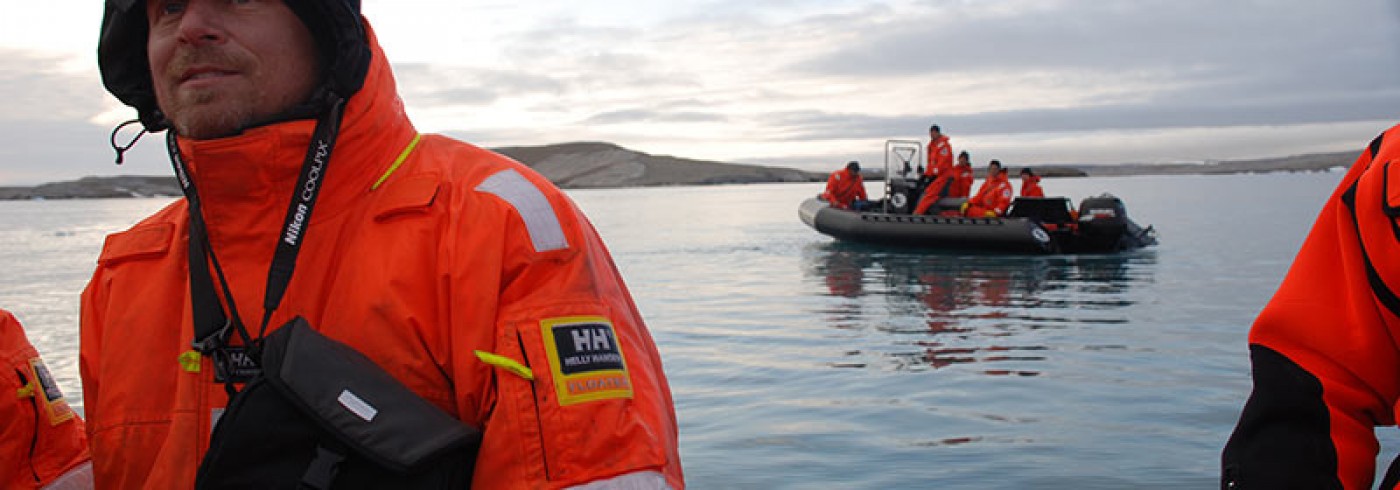The general scientific objective focused on Arctic warming and on this fairly unexplored part of the Arctic. Global change has the largest effect in the high Arctic due to the larger excess energy expected, and the northernmost areas will be the area’s first to show signs of change and stress on the cryosphere and of the ecotone. This made climate change and impact research the highest priority for Kinnvika.
Large changes
Regional modelling of the future of the Arctic predicts that the average warming over the High Arctic will probably be in the range of 5–7 °C during this century. With the projected large warming of the Arctic, areas closer to the advection pathways transporting heat will initially be worse affected than areas that are more isolated from exchange of heat. Svalbard is such a sensitive area, due to the proximity to the North Atlantic Drift, and may be expected to show large changes with future warming.
Since Svalbard is the northernmost land in the European sector of the Arctic, and Nordaustlandet is the northernmost large terrain in Svalbard, changes taking effect here will most likely propagate southwards, both as physical processes and as economic and political consequences for our societies, making this an issue that needs to be taken seriously by the Nordic countries.
Why Nordaustlandet?
Because of its position the island of Nordaustlandet is climatically more affected by Arctic air and therefore more extreme than the other parts of Svalbard. It was chosen as the study site for several reasons:
- Being the northernmost sizeable terrestrial platform in the European sector of the Arctic, Nordaustlandet will be the first to experience large sets of changes due to present warming which is expected to continue in the future.
- Being farthest away from Eurasian pollutant sources and from the influence of the north-eastern Atlantic Drift, Kinnvika can provide unique conditions for monitoring of meteorological and environmental parameters.
- Being sparsely studied, Nordaustlandet is relatively poorly mapped with respect to ecosystems, terrestrial deposits and geological sequences.
- Svalbard plays an important part in Nordic polar history, and Nordaustlandet has been at the centre of whaling and hunting activities, as well as of early polar exploration efforts.
Schedule for the expedition
The spring season for 2009 covered roughly 6–8 weeks between 1 April and 27 May. One important task at the end of this period was to organise the station and equipment in advance of the final fieldwork in August.
The summer season ran 1–17 August, and some 20 researchers worked in the area. Once the fieldwork had been wrapped up, all the equipment was loaded onto the Horyzont II, and Kinnvika Station was cleaned out and documented.
The Swedish Polar Research Secretariat supported the project by providing safety equipment, equipment for the base camp, IT communications and the involvement of field technicians.
Principal investigator
Veijo Pohjola
Uppsala University







